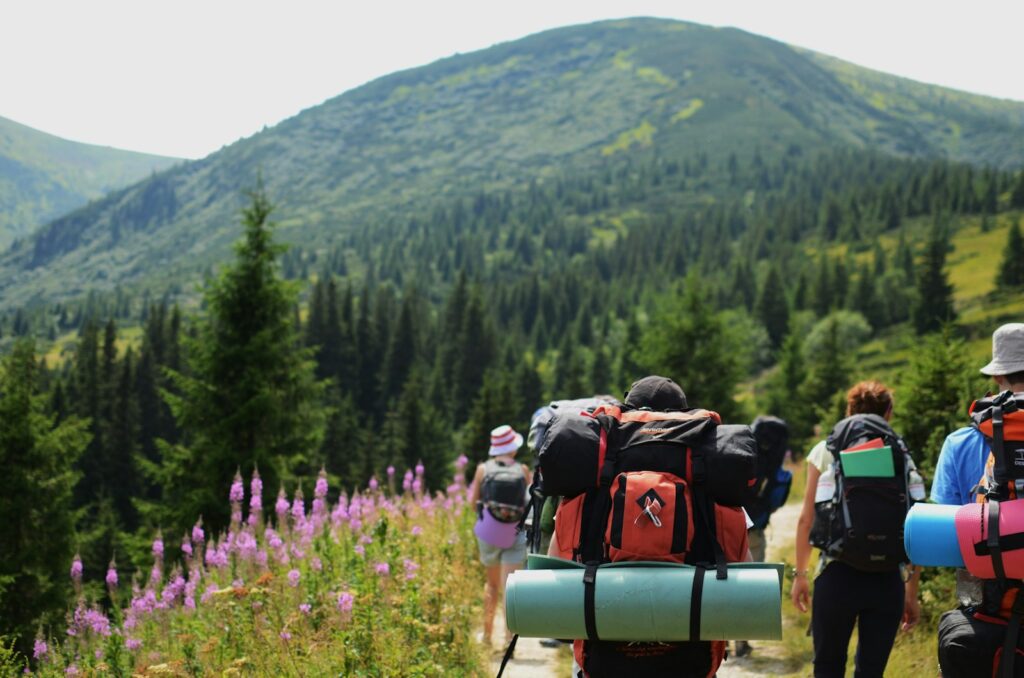Exploring nature’s wilderness can be an exhilarating experience, offering a much-needed escape from the hustle and bustle of daily life. The serene beauty of forests, mountains, and meadows draws millions of hikers, campers, and outdoor enthusiasts each year. However, these natural havens are also home to various wildlife species that deserve our respect and caution. While animal attacks are relatively rare, being unprepared in the wilderness can lead to dangerous encounters. Understanding animal behavior, recognizing warning signs, and knowing how to react appropriately can make the difference between a memorable outdoor adventure and a potentially life-threatening situation. This comprehensive guide provides essential tips to help you minimize the risk of animal encounters and navigate them safely if they do occur.
Know Your Local Wildlife Before Hitting the Trail

Before embarking on any outdoor adventure, research the specific wildlife that inhabits the area you plan to visit. Different regions are home to various potentially dangerous animals, from bears and mountain lions in North American forests to venomous snakes in desert trails. Understanding which animals you might encounter allows you to prepare appropriately and recognize potential threats. Local ranger stations, visitor centers, and wildlife management websites typically provide updated information about recent animal activity and potential danger zones. Additionally, knowing an animal’s typical behavior patterns, habitat preferences, and active seasons can help you avoid peak danger times and locations. This preliminary research forms the foundation of your safety strategy and should never be skipped, even when visiting familiar territories.
Make Your Presence Known While Hiking

One of the most effective ways to prevent animal encounters is to announce your presence while traveling through wilderness areas. Most wild animals prefer to avoid human interaction and will generally move away if they know you’re coming. Talk in normal voices, sing songs, or attach bear bells to your backpack to create a consistent noise that alerts wildlife to your approach. This strategy is particularly important when hiking in dense vegetation, near loud water sources, or around blind corners where animals might not see you coming. Avoid the temptation to move silently through nature, as surprising a wild animal at close range can trigger defensive or aggressive behavior. Remember that making noise is especially crucial during early morning and evening hours when many predators are most active.
Travel in Groups Whenever Possible

The safety-in-numbers principle applies strongly to wilderness travel, as most predatory animals are far less likely to approach multiple humans than a solo hiker. When traveling with others, you benefit from multiple sets of eyes and ears to detect potential wildlife threats before they escalate to dangerous situations. Groups also appear larger and more intimidating to animals, further reducing the likelihood of an attack. Additionally, should an emergency occur, having companions means immediate assistance is available for first aid, contacting emergency services, or scaring away an aggressive animal. If you must hike alone, be extra vigilant about making noise, stick to well-traveled paths, and consider leaving your detailed itinerary with someone who can alert authorities if you don’t return as scheduled.
Maintain Proper Food Storage and Handling

Improper food management is one of the leading causes of dangerous wildlife encounters, particularly with bears and other scavengers. Animals have incredibly sensitive noses and can detect food odors from remarkable distances, potentially drawing them to your campsite or rest area. Always store food in wildlife-resistant containers, bear canisters, or properly hung bear bags suspended between trees at least 10-15 feet off the ground and 4 feet from any trunk. Never keep food, scented items, or trash in your tent, and cook meals at least 100 yards from your sleeping area to avoid creating a food-scented environment where you’ll be vulnerable. After meals, thoroughly clean all cooking equipment, properly dispose of wastewater, and change clothes if they’ve been splashed with food to eliminate attractive odors.
Respect Wildlife Space and Boundaries

One fundamental rule of wildlife safety is maintaining appropriate distance from any animal you encounter. Most national parks recommend staying at least 100 yards (91 meters) from predators like bears and wolves, and at least 25 yards (23 meters) from other large mammals like bison, elk, or moose. These seemingly docile herbivores can be just as dangerous as predators when they feel threatened or cornered. Never approach wildlife for photographs or a closer look, regardless of how calm they may appear. Use binoculars or telephoto camera lenses instead to observe animals from a safe distance. Remember that you are a visitor in their habitat, and forcing an animal to change its behavior because of your presence is not only disrespectful but potentially dangerous.
Learn to Identify Animal Signs and Warnings

Developing the ability to recognize animal signs can help you avoid areas of high wildlife activity and potential conflict. Fresh tracks, scat (animal droppings), scratch marks on trees, disturbed vegetation, or partially eaten carcasses all indicate recent animal presence. Additionally, learn to identify warning behaviors that suggest an animal feels threatened. For bears, these might include standing on hind legs (often to get a better look, not necessarily aggression), jaw-popping, huffing, or swatting the ground. Mountain lions may crouch low, twitch their tails, or pin their ears back. Rattlesnakes will coil and rattle their tail before striking. By recognizing these precursors to aggression, you gain precious seconds to employ appropriate avoidance or deterrent strategies before a situation escalates to an attack.
Carry and Know How to Use Proper Deterrents

In regions with potentially dangerous wildlife, carrying appropriate deterrents can provide crucial protection during unexpected encounters. Bear spray (a specialized pepper spray formula) has proven highly effective against bears and other large predators when used correctly. It typically has a range of 30-35 feet and creates a powerful deterrent cloud that affects an animal’s sensitive respiratory system and eyes. Always keep deterrents easily accessible—not buried in your backpack—and practice removing the safety cap and deploying them quickly under pressure. Some areas may permit other deterrents like air horns or personal protection devices, but check local regulations before carrying such items. Remember that any deterrent is only effective if you know exactly how to use it in a high-stress situation, so familiarize yourself with the instructions before hitting the trail.
Stay Alert and Minimize Distractions

Maintaining situational awareness is crucial for preventing surprise wildlife encounters that could turn dangerous. Resist the temptation to hike with headphones or earbuds that block natural sounds—hearing an animal rustling in underbrush or vocalizing could provide your first warning of its presence. Regularly scan your surroundings, including looking behind you occasionally, as some predators may approach from the rear. Pay particular attention when visibility is limited, such as in dense forest, tall grass, or around blind curves in the trail. If you need to check your phone or map, stop completely and remain aware of your surroundings rather than walking distracted. This heightened awareness allows you to detect potential threats early and modify your route or behavior accordingly before a close encounter occurs.
Understand Specific Animal Encounter Protocols

Different animals require different response strategies if you do encounter them, and using the wrong approach can escalate rather than defuse a situation. For bears, the appropriate response varies by species—with black bears, you generally want to appear large, make noise, and fight back if attacked; with grizzlies, playing dead may be necessary if contact is imminent. For mountain lions, maintaining eye contact, appearing large, and fighting aggressively if attacked are recommended. Snake encounters require standing still or backing away slowly, as most strikes occur when the snake feels cornered or threatened by movement. Moose and bison demand significant distance and escape routes, as they can charge with little warning. Research specific protocols for animals in your hiking area and mentally rehearse these responses so they become instinctive if needed.
Time Your Hikes Strategically

The timing of your outdoor activities can significantly impact the likelihood of problematic wildlife encounters. Many predators, including bears and mountain lions, are most active during dawn and dusk (crepuscular periods) when hunting is optimal for them. Planning your hikes during mid-day can reduce the chances of crossing paths with these animals during their prime hunting times. Similarly, certain seasons present increased risks—spring brings protective mother bears with cubs, while late summer and fall may find bears aggressively foraging before hibernation. During rutting season, male deer, elk, and moose become particularly territorial and aggressive. By adjusting your hiking schedule to avoid these high-risk times and seasons when possible, you naturally reduce your chance of a dangerous encounter without additional effort.
Choose Appropriate Trails and Campsites

Your choice of hiking routes and overnight locations can dramatically affect your wildlife encounter risk profile. Well-traveled, established trails generally have less wildlife activity due to regular human presence. When selecting campsites, avoid areas with obvious animal signs such as tracks, scat, or trampled vegetation that might indicate game trails or feeding areas. Stay away from berry patches, fish-bearing streams during spawning season, and meadows with abundant fresh growth that attract grazing animals and their predators. In bear country, avoid camping in valley bottoms where bears frequently travel and opt instead for higher, more open terrain with good visibility. Remember that proper campsite selection is a skill that develops with experience, but even beginners can reduce risk by following established camping areas and heeding local ranger advice.
Control Pets and Children on the Trail

Dogs and children can inadvertently increase your risk of wildlife encounters if not properly managed in wilderness settings. Unleashed dogs may chase wildlife, potentially returning to their owners with angry predators in pursuit. Always keep dogs leashed in areas with potential predator activity, and consider whether bringing pets is appropriate for your destination. Similarly, ensure children understand wilderness safety rules, including staying close to adults, not running ahead on trails, and never approaching wild animals regardless of how cute or harmless they appear. Teach children to recognize potential danger signs and establish a clear communication system for alerting adults to wildlife sightings. The unpredictable movements and higher-pitched sounds of both pets and children can trigger predatory responses in some wildlife, making strict supervision essential for everyone’s safety.
Prepare for the Unexpected with First Aid Knowledge

Despite taking all reasonable precautions, animal encounters sometimes result in injuries requiring immediate attention. Carrying a well-stocked first aid kit and knowing how to use it can make a critical difference in emergency situations. For potential animal attack scenarios, include items specifically for puncture wounds, bleeding control, and wound cleaning to prevent infection. Learn basic wound management techniques, including how to properly clean animal-inflicted injuries, which often carry high infection risks. Understanding the symptoms of anaphylaxis from insect stings or venomous bites can save lives when allergic reactions occur. Additionally, familiarize yourself with evacuation procedures for your hiking area, including the fastest routes to medical assistance and how to communicate your location to emergency responders in areas with limited cellular service.
Wildlife encounters represent one of nature’s most exhilarating yet potentially dangerous aspects of outdoor recreation. By following these comprehensive safety practices, you significantly reduce your risk of negative interactions while maintaining respect for the wild creatures whose home you’re visiting. Remember that most animals have no interest in confronting humans and will avoid contact given the opportunity. The vast majority of wildlife attacks occur when animals feel threatened, surprised, or when protecting young or food sources—situations largely preventable through proper preparation and behavior. With the right knowledge, equipment, and mindset, you can enjoy the breathtaking beauty of wild places while keeping both yourself and the animals that inhabit them safe from harm.

